Jiaming Ding
OpenRR-1k: A Scalable Dataset for Real-World Reflection Removal
Jun 10, 2025Abstract:Reflection removal technology plays a crucial role in photography and computer vision applications. However, existing techniques are hindered by the lack of high-quality in-the-wild datasets. In this paper, we propose a novel paradigm for collecting reflection datasets from a fresh perspective. Our approach is convenient, cost-effective, and scalable, while ensuring that the collected data pairs are of high quality, perfectly aligned, and represent natural and diverse scenarios. Following this paradigm, we collect a Real-world, Diverse, and Pixel-aligned dataset (named OpenRR-1k dataset), which contains 1,000 high-quality transmission-reflection image pairs collected in the wild. Through the analysis of several reflection removal methods and benchmark evaluation experiments on our dataset, we demonstrate its effectiveness in improving robustness in challenging real-world environments. Our dataset is available at https://github.com/caijie0620/OpenRR-1k.
F2T2-HiT: A U-Shaped FFT Transformer and Hierarchical Transformer for Reflection Removal
Jun 05, 2025Abstract:Single Image Reflection Removal (SIRR) technique plays a crucial role in image processing by eliminating unwanted reflections from the background. These reflections, often caused by photographs taken through glass surfaces, can significantly degrade image quality. SIRR remains a challenging problem due to the complex and varied reflections encountered in real-world scenarios. These reflections vary significantly in intensity, shapes, light sources, sizes, and coverage areas across the image, posing challenges for most existing methods to effectively handle all cases. To address these challenges, this paper introduces a U-shaped Fast Fourier Transform Transformer and Hierarchical Transformer (F2T2-HiT) architecture, an innovative Transformer-based design for SIRR. Our approach uniquely combines Fast Fourier Transform (FFT) Transformer blocks and Hierarchical Transformer blocks within a UNet framework. The FFT Transformer blocks leverage the global frequency domain information to effectively capture and separate reflection patterns, while the Hierarchical Transformer blocks utilize multi-scale feature extraction to handle reflections of varying sizes and complexities. Extensive experiments conducted on three publicly available testing datasets demonstrate state-of-the-art performance, validating the effectiveness of our approach.
OpenRR-5k: A Large-Scale Benchmark for Reflection Removal in the Wild
Jun 05, 2025Abstract:Removing reflections is a crucial task in computer vision, with significant applications in photography and image enhancement. Nevertheless, existing methods are constrained by the absence of large-scale, high-quality, and diverse datasets. In this paper, we present a novel benchmark for Single Image Reflection Removal (SIRR). We have developed a large-scale dataset containing 5,300 high-quality, pixel-aligned image pairs, each consisting of a reflection image and its corresponding clean version. Specifically, the dataset is divided into two parts: 5,000 images are used for training, and 300 images are used for validation. Additionally, we have included 100 real-world testing images without ground truth (GT) to further evaluate the practical performance of reflection removal methods. All image pairs are precisely aligned at the pixel level to guarantee accurate supervision. The dataset encompasses a broad spectrum of real-world scenarios, featuring various lighting conditions, object types, and reflection patterns, and is segmented into training, validation, and test sets to facilitate thorough evaluation. To validate the usefulness of our dataset, we train a U-Net-based model and evaluate it using five widely-used metrics, including PSNR, SSIM, LPIPS, DISTS, and NIQE. We will release both the dataset and the code on https://github.com/caijie0620/OpenRR-5k to facilitate future research in this field.
Degradation-Aware Image Enhancement via Vision-Language Classification
Jun 05, 2025Abstract:Image degradation is a prevalent issue in various real-world applications, affecting visual quality and downstream processing tasks. In this study, we propose a novel framework that employs a Vision-Language Model (VLM) to automatically classify degraded images into predefined categories. The VLM categorizes an input image into one of four degradation types: (A) super-resolution degradation (including noise, blur, and JPEG compression), (B) reflection artifacts, (C) motion blur, or (D) no visible degradation (high-quality image). Once classified, images assigned to categories A, B, or C undergo targeted restoration using dedicated models tailored for each specific degradation type. The final output is a restored image with improved visual quality. Experimental results demonstrate the effectiveness of our approach in accurately classifying image degradations and enhancing image quality through specialized restoration models. Our method presents a scalable and automated solution for real-world image enhancement tasks, leveraging the capabilities of VLMs in conjunction with state-of-the-art restoration techniques.
Survey on Single-Image Reflection Removal using Deep Learning Techniques
Feb 12, 2025Abstract:The phenomenon of reflection is quite common in digital images, posing significant challenges for various applications such as computer vision, photography, and image processing. Traditional methods for reflection removal often struggle to achieve clean results while maintaining high fidelity and robustness, particularly in real-world scenarios. Over the past few decades, numerous deep learning-based approaches for reflection removal have emerged, yielding impressive results. In this survey, we conduct a comprehensive review of the current literature by focusing on key venues such as ICCV, ECCV, CVPR, NeurIPS, etc., as these conferences and journals have been central to advances in the field. Our review follows a structured paper selection process, and we critically assess both single-stage and two-stage deep learning methods for reflection removal. The contribution of this survey is three-fold: first, we provide a comprehensive summary of the most recent work on single-image reflection removal; second, we outline task hypotheses, current deep learning techniques, publicly available datasets, and relevant evaluation metrics; and third, we identify key challenges and opportunities in deep learning-based reflection removal, highlighting the potential of this rapidly evolving research area.
Futuristic Variations and Analysis in Fundus Images Corresponding to Biological Traits
Feb 08, 2023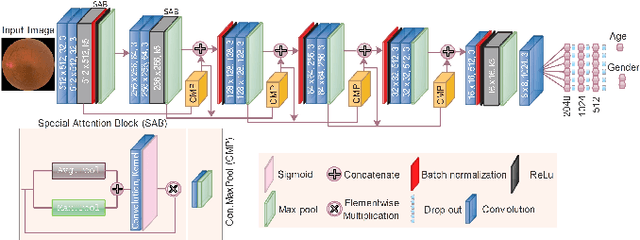

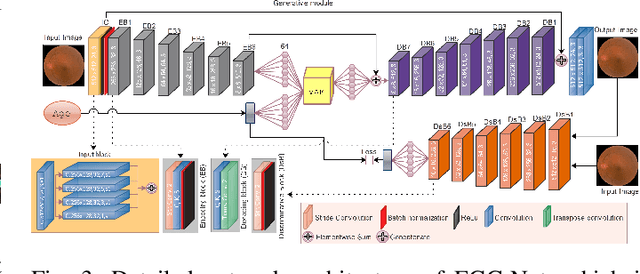
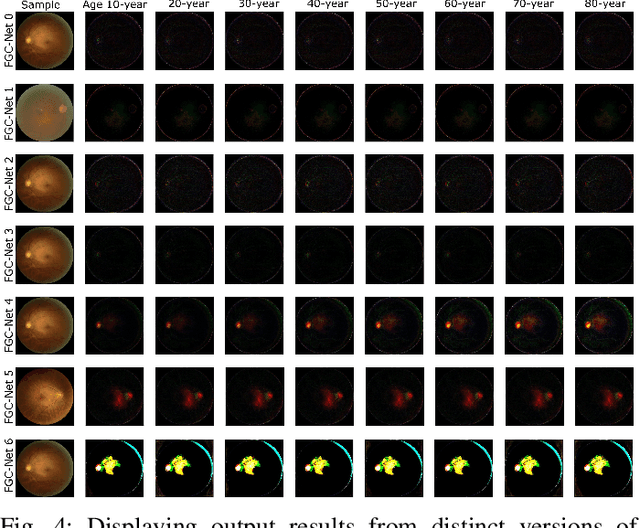
Abstract:Fundus image captures rear of an eye, and which has been studied for the diseases identification, classification, segmentation, generation, and biological traits association using handcrafted, conventional, and deep learning methods. In biological traits estimation, most of the studies have been carried out for the age prediction and gender classification with convincing results. However, the current study utilizes the cutting-edge deep learning (DL) algorithms to estimate biological traits in terms of age and gender together with associating traits to retinal visuals. For the traits association, our study embeds aging as the label information into the proposed DL model to learn knowledge about the effected regions with aging. Our proposed DL models, named FAG-Net and FGC-Net, correspondingly estimate biological traits (age and gender) and generates fundus images. FAG-Net can generate multiple variants of an input fundus image given a list of ages as conditions. Our study analyzes fundus images and their corresponding association with biological traits, and predicts of possible spreading of ocular disease on fundus images given age as condition to the generative model. Our proposed models outperform the randomly selected state of-the-art DL models.
Real-Time Super-Resolution for Real-World Images on Mobile Devices
Jun 03, 2022

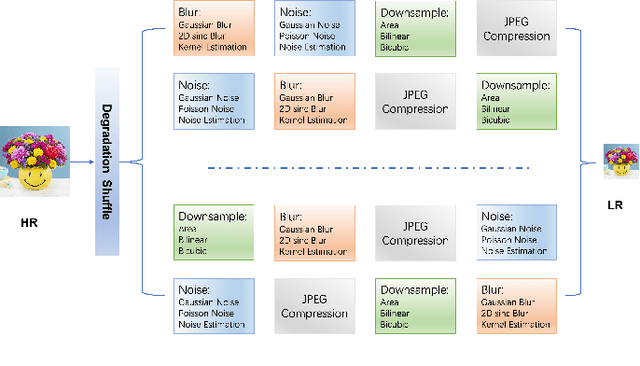

Abstract:Image Super-Resolution (ISR), which aims at recovering High-Resolution (HR) images from the corresponding Low-Resolution (LR) counterparts. Although recent progress in ISR has been remarkable. However, they are way too computationally intensive to be deployed on edge devices, since most of the recent approaches are deep learning-based. Besides, these methods always fail in real-world scenes, since most of them adopt a simple fixed "ideal" bicubic downsampling kernel from high-quality images to construct LR/HR training pairs which may lose track of frequency-related details. In this work, an approach for real-time ISR on mobile devices is presented, which is able to deal with a wide range of degradations in real-world scenarios. Extensive experiments on traditional super-resolution datasets (Set5, Set14, BSD100, Urban100, Manga109, DIV2K) and real-world images with a variety of degradations demonstrate that our method outperforms the state-of-art methods, resulting in higher PSNR and SSIM, lower noise and better visual quality. Most importantly, our method achieves real-time performance on mobile or edge devices.
AIM 2020 Challenge on Efficient Super-Resolution: Methods and Results
Sep 15, 2020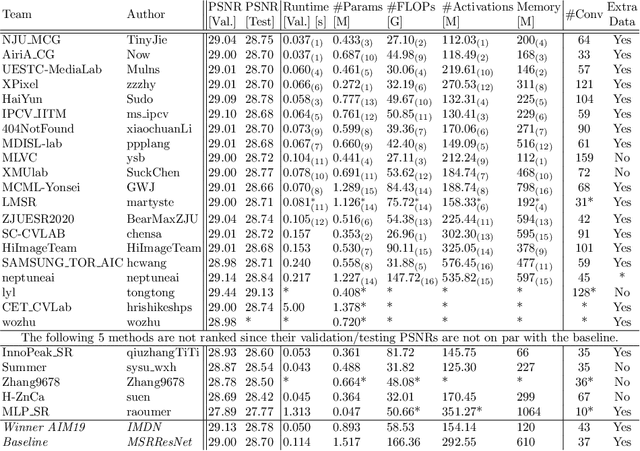
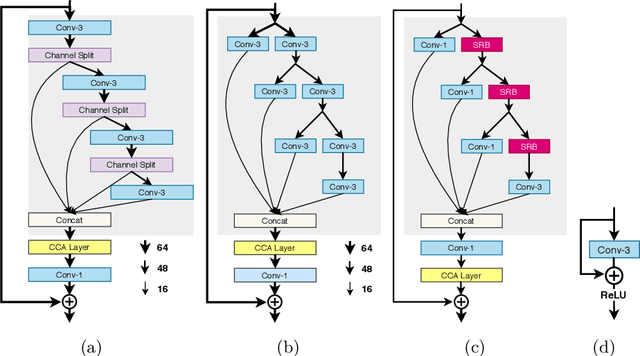

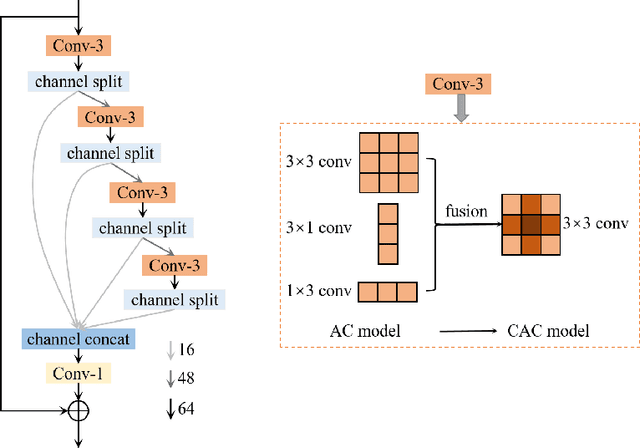
Abstract:This paper reviews the AIM 2020 challenge on efficient single image super-resolution with focus on the proposed solutions and results. The challenge task was to super-resolve an input image with a magnification factor x4 based on a set of prior examples of low and corresponding high resolution images. The goal is to devise a network that reduces one or several aspects such as runtime, parameter count, FLOPs, activations, and memory consumption while at least maintaining PSNR of MSRResNet. The track had 150 registered participants, and 25 teams submitted the final results. They gauge the state-of-the-art in efficient single image super-resolution.
 Add to Chrome
Add to Chrome Add to Firefox
Add to Firefox Add to Edge
Add to Edge